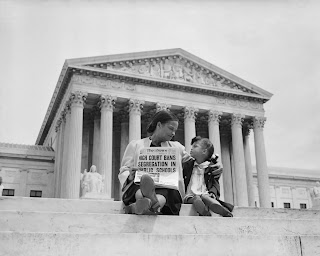Imagine being at Church on a typical Sunday morning, just as many people do each Sundays, when suddenly you're hit by a blast from an explosion violent enough to rip through a wall from the inside of a stairwell. You look around and see people around you injured, debris everywhere from where the church used to be, covered in mortar and brick. This was many people's experience in the Sixteenth Street Baptist Church on September fifteenth, nineteen sixty-three, except for four little girls who did not live through the explosion to tell their story.
The church was bombed by Klan members who planted fifteen stacks of dynamite in the stairwell ahead of time. This town was known to have a disrupted balance of racial segregation. The racism had to be directly confronted by the ACMHR, also known as the Alabama Christian Movement for Human Rights. This was such an urgent movement that this group worked with Martin Luther King Jr and his Southern Christian leadership Conference (SCLC). These efforts only caused month-long protests with the intention to end segregation in the city.The survivors, including the twenty people who were injured, were able to find their way out through the smoke-filled remains of where the church used to stand. The bodies of the four missing girls, Addie Mae Collins, Cynthia Wesley, Carole Robertson and Denise McNair, were found in the basement bathroom and were killed instantly by the powerful blows according to this website.
According to this website, this church was mainly a worship place for African Americans and was also used as a meeting place for Civil Rights Leaders, such as Martin Luther King Jr., and because of all of this, the city of Birmingham was not unfamiliar with racial segregation. Many protest marches were taken on the front steps of this church during that process.
This bombing should not have been a big surprise to anyone, as this Birmingham had seen over fifty bombings in fifteen years.
This marked the third bombing since the federal court mandating integration in schools to be legal.
The aftermath of the bombing drew national attention and a huge grapple between the police and protesters. Hundreds, and thousands of black protesters came together at the scene of the bombing. These protests were so bad that the police had to call for help and use force tough enough to injure and even kill one of the protesters before the National Guard was called for help.
This bombing led to the civil rights bill, proposed by President John Kennedy, which led to the Civil Rights Act, which all gained widespread support.
The awakening call for the nation and federal government was the death of four innocent young girls, who lost their lives for something that is not their fault. The whole country was ready for a change to happen. “The turning point in the civil rights movement”, as some historians call it shows that this effort for civil rights and the end of segregation was a hard battle, if it had to take the lives of four innocent girls to put the problem into perspective for people.






No comments:
Post a Comment